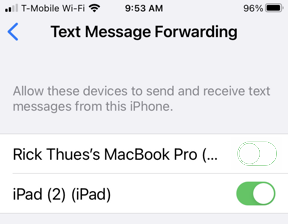
Episode #739
April 1, 2023
Chuck Yeager is sitting in the orange, bullet shaped X-1. It is tucked under the belly of a B-29 bomber at 20,000 feet above the dry lake bed of Muroc Army Air Force Base, California.
This is the 50th flight of the Bell X-1 rocket plane.
The bomber is pushed into a dive to achieve a drop speed of 260 MPH. Any slower and the X-1 will not glide smoothly prior to engine fire. The X-1 is prematurely released at the slower speed of 240 MPH and becomes unstable. Most pilots would pull back to stabilize the airflow, but Yeager pushes the yoke forward using gravity to speed up the airplane and smooth out the airflow over the thin aerodynamics of the wings.
The four rockets fire and the X-1 climbs quickly to 36,000 feet, Mach .88.
Throttling back, he continues to climb. 40,000 feet, Mach .92.
Full power… 42,000 feet, Mach .96.
The flight is smooth. The needle on the Mach meter ticks up to Mach 1.06. Yeager has broken the speed of sound. On the ground, two sonic booms are heard.
If it were not for Yeager thinking outside of the box the X-1 would have broken up seconds after the drop from the turbulence of too slow a speed. Pushing the yoke forward was counter to common pilot knowledge. Yeager used his fighter airplane experience and intuition to overcome a situation that was not as it seemed.
When I was a teenager, in a somewhat less exciting situation, I was test driving a car. It was a 1950s Oldsmobile.
I had put the car’s Hydra-Matic automatic transmission into Drive and drove down a parking lot driveway. I stopped at the edge of the street to watch for traffic. I took my foot off the brake and the car backed up. Braking again, I saw an opening in the traffic and carefully accelerated onto the street. When I got home I told my father about the automatic transmission malfunction which unexpectedly caused the car to back up. My father laughed, “I think you just rolled backward into the gutter.”
Things are not always as they seem.
Just last week I had an in-wall refrigerator water supply valve installed to replace an old saddle valve. The plumber did a fine job. The new in-wall valve will allow the refrigerator to be pushed farther back against the wall.
An hour after the plumber left I noticed a drip coming from the opening of the valve. It was no more that two drops, but a valve should not leak at all. I called up the plumber:
“Oscar, I think the valve you installed has a very slow internal leak.”
“I tested the valve before I left. Did you try tightening the valve?”
“I did that right after you left the house, but I still have a little water oozing out of the valve.”
“I think it might be residual water from the valve neck. Dry it out with a Q-Tip and call me if it keeps dripping.”
Sure enough, once dried out the valve no longer leaked.
Things are not always as they seem.
Recently, the text messaging app on my computer stopped working. I could not send or receive messages. Yet, the iPhone Messages app continued to work. On a Mac the Messages app syncs with an iPhone to send and receive messages. I tried reassociating the Mac with the iPhone in IOS Messages settings. The verification code did not show on the Mac. “Must be a iCloud error,” I thought.
I signed out of iCloud on the Mac. When signing back in I got a System Preferences error. “Must be a MacOS error,” I thought.
I did a software update on the Mac. I was able to sign back into iCloud, but the Mac would still not receive a verification code. “Might be an iPhone OS error,” I thought. I did an IOS update on the iPhone.
This time when the sync setting was turned on, the code was delivered to the Mac, but it showed another person’s name. I searched for my phone number in my address book and found two other contacts with my phone number. The problem all along was that the iPhone did not know which contact name to sync the messages with.
Operating System updates did help Messages figure out the problem, but had I culled the duplicate phone numbers from the Contacts App in the first place, I could have solved my problem without updating.
Things are not always as they seem.
PLEASE BUY MY BOOKS:
“Skydivers Know Why Birds Sing” by Ricki T Thues is now available on Amazon.
It is a Love story of Rick and Paula Thues and their 35 years of Skydiving.
Click HERE to buy the paperback or Kindle ebook at Amazon.
Follow Ricki T Thues on Amazon HERE.
ALSO AVAILABLE:
“Technically Human” by Ricki T Thues, the iMentor, is available on Amazon.
It is a compilation of selected episodes from this bLog which tell the story of Humanity through the eyes of the iMentor.
Click HERE to buy the paperback or Kindle ebook at Amazon.
The ebook version of “Technically Human” is also available on Kobo. Click HERE.
For you Barnes and Noble Nook readers it is available for Nook. Click HERE.
The “Technically Human” ebook is also available on Apple Books . Click HERE.












Weii said. Anyone that has ever touched a computer knows that what worked today may work differently tomorrow, cause some programmer thinks they have found a better way to skin a cat. (Even if it isn’t logical to a normal person)
Defying gravity. Of course! Good read. It reminds me to be more patient with my DIY tech support.